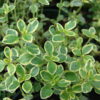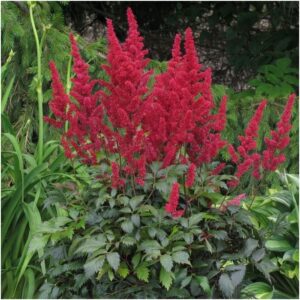Chamaemelum nobile
£8.50
Frequently Bought Together


Description
Chamaemelum nobile (Roman Chamomile)
Quick Facts
- Common Name: Roman Chamomile, English Chamomile, Garden Chamomile
- Botanical Name: Chamaemelum nobile
- Plant Type: Evergreen perennial herb
- Mature Height: 10-30cm
- Mature Spread: 30-45cm
- Flowering Period: June-September
- Flower Colour: White petals with golden yellow centres
- Foliage: Feathery, aromatic, apple-scented leaves
- Hardiness: RHS H5 (hardy throughout UK and Ireland)
- Soil Requirements: Well-drained, sandy or loamy soil
- Aspect: Full sun to partial shade
- Maintenance: Low
Description
Like scattered stars across a verdant carpet, Chamaemelum nobile transforms Irish gardens into fragrant sanctuaries where every footstep releases the sweet, apple-like perfume that has enchanted gardeners for centuries. This delightful evergreen perennial creates a living tapestry of soft, feathery foliage crowned with cheerful daisy-like flowers that dance in the gentlest English breeze.
The plant’s low-growing, mat-forming habit makes it perfect for creating aromatic lawns, filling gaps between stepping stones, or cascading over the edges of raised beds and containers. Each tiny flower, no larger than a button, carries the classic daisy form with pristine white petals radiating from a golden centre, creating a cottage garden charm that feels perfectly at home in Irish landscapes.
Steeped in folklore and herbal tradition, Roman Chamomile has graced European gardens since medieval times, earning its place as one of the most beloved aromatic herbs. In Irelthe UK’s temperate climate, this hardy perennial thrives with minimal fuss, establishing quickly into dense, weed-suppressing mats that remain attractive throughout the year.
In Irish garden design, Roman Chamomile pairs beautifully with other Mediterranean herbs like lavender and thyme, creates stunning contrasts with purple-leaved heucheras, and complements silver-foliaged plants like Stachys byzantina. Its versatility makes it equally at home in formal herb gardens, cottage borders, or contemporary gravel gardens where its textural qualities shine.
Caragh Garden Notebook
Plant in spring or early autumn, spacing 20-30cm apart in well-prepared, free-draining soil. In the UK’s wetter climate, ensure excellent drainage by incorporating grit or sharp sand into heavy soils, or consider raised beds for optimal growing conditions. Container cultivation works exceptionally well using a soil-based compost with added drainage material.
Thrives in pH 6.0-7.5 and performs best in full sun, though tolerates partial shade in Irish conditions. Choose a position with good air circulation to prevent fungal issues in our humid climate. Particularly effective when planted where it can be brushed against to release its distinctive fragrance.
Deadhead spent flowers regularly to encourage continuous blooming and maintain neat appearance. Trim lightly after flowering to prevent self-seeding if desired, though the plant rarely becomes invasive. In late autumn, simply tidy any damaged foliage but avoid hard pruning as the plant remains semi-evergreen.
Divide established clumps every 3-4 years in spring to maintain vigour and create new plants. Chamomile is remarkably drought-tolerant once established, making it perfect for low-maintenance Irish gardens and an excellent choice for areas that receive less regular watering.
For culinary and herbal use, harvest flowers in the morning after dew has dried but before the heat of the day, selecting blooms that are fully open for the best flavour and aromatic properties.





